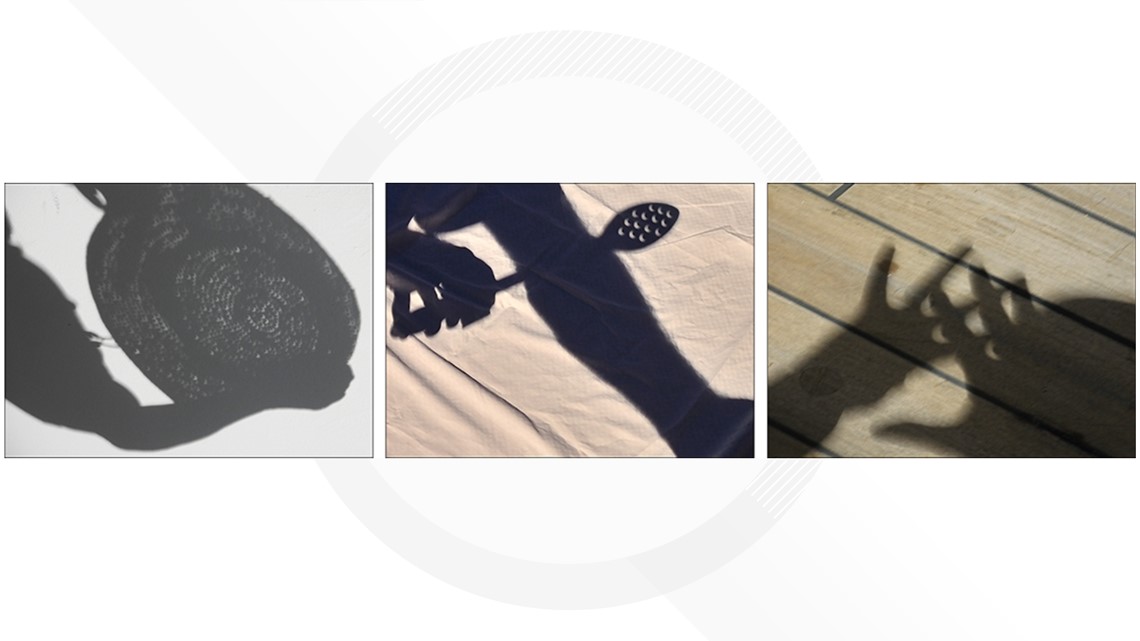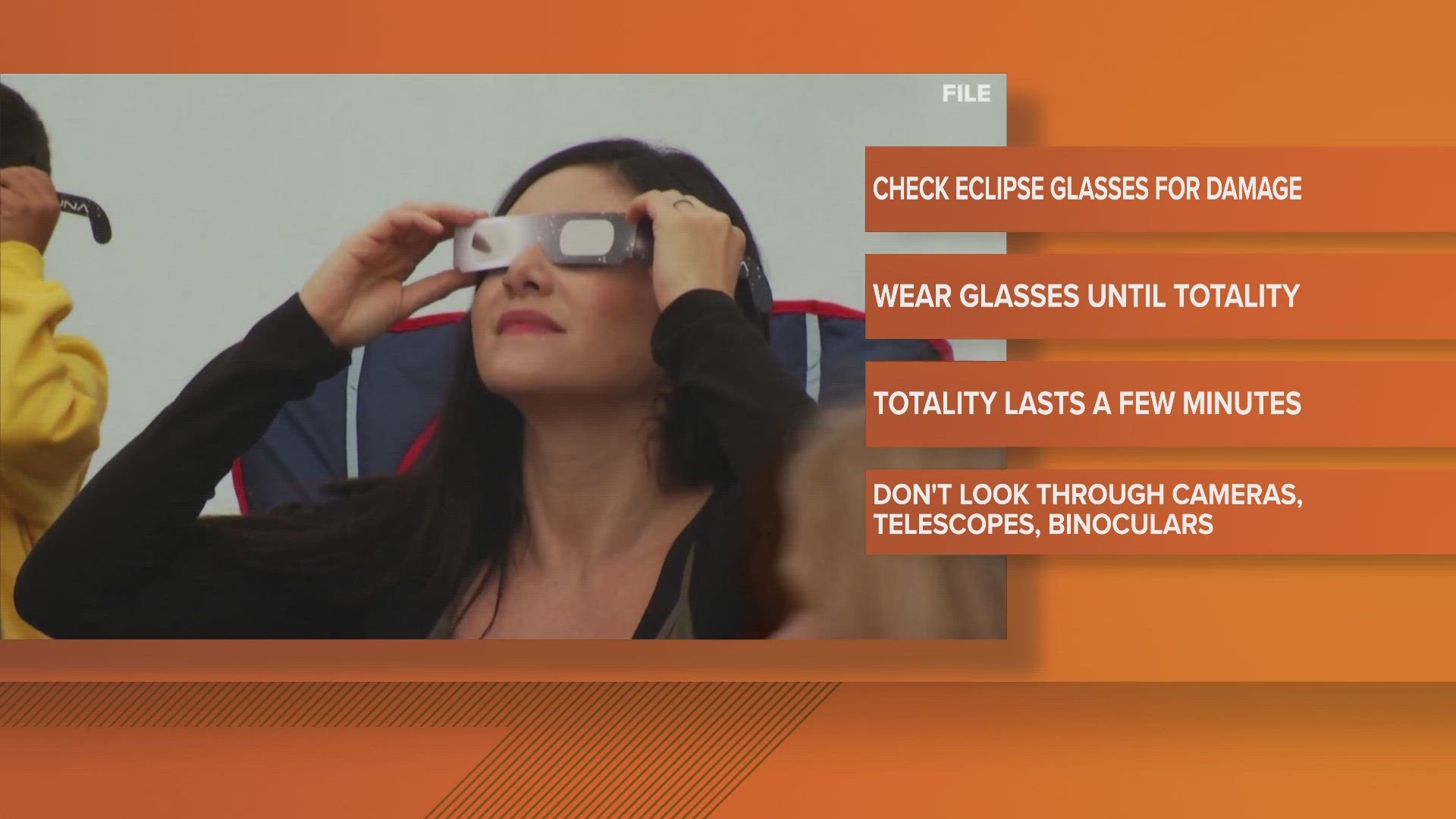ST. LOUIS — We all want to see this celestial event, but to view it safely you'll need a pair of eclipse glasses.
No other eyewear, not even the darkest tinted sunglasses, can protect your eyes from the sun's UV rays like official eclipse glasses or solar viewers.
Eye damage from the sun can happen in less than a minute.
So, be sure to check your eclipse glasses for any scratches or holes. If you see damage, don't use them.
Wear your Solar Eclipse glasses anytime the moon isn't completely blocking the sun's rays. So that's during the lead-up to the total eclipse and right before the end of totality.
If you're in the path of totality, technically you can take off your glasses during the totality period. But, be careful; the sun will only be covered for a few minutes.
Remember, do NOT look at the sun through a camera lens, telescope or binoculars unless it has specialized filters. It's not even safe to view the eclipse while you have eclipse glasses on.
But how do you make sure your eclipse glasses are legit? And is it safe to use an old pair?
I asked Washington University Pediatric Optometrist Dr. Mark Rallo.
"These particular glasses are based on standards from 2015-- those glasses do not expire from that point on, per say," He adds, "They're going to have a little notation... look for the letters ISO12312-2."
One IMPORTANT tip from Dr. Rallo is to always keep a very close eye on your kids during the eclipse. Go over those safety tips with them before you go outside to view the event. That way they don't take off their glasses during the eclipse.
If you are still looking for eclipse glasses, the American Astronomical Society Solar Eclipse Task Force vetted sellers and compiled a list of trusted manufacturers and suppliers of eclipse glasses here.
If you have a pair of eclipse glasses somewhere other than those locations, that doesn't necessarily mean they won't work. The AAS Solar Eclipse Task Force says it's simply impossible to vet every manufacturer, and most of the time these products end up being safe.
The AAS said one red flag to keep an eye out for is glasses that say they were certified by NASA. NASA confirmed they don't certify or endorse products, and their website links to the AAS retailer list.
If you don't want to look directly at the eclipse with solar glasses, there's another tool you can use. You can make it at home in minutes.
It’s called a solar eclipse viewer or a pinhole projector.
Here’s what you need:
- a box (a shoe box will work)
- a small piece of tinfoil
- a white sheet of paper
- tape
- a pin or needle ( you can also use the sharp tip of a pencil)
- scissors or a box cutter
Step 1: Cut a small hole (about 1 inch across) in one end of the shoe box.
Step 2: Tape a piece of tinfoil over the hole.
Step 3: Using a pin or needle or pencil to punch a hole in the center of the foil.
Step 4: Tape a small piece of white paper to the inside of the box, at the opposite end from the foil-covered hole. This will act as your projection screen.
Step 5: Cut a 1-inch-diameter hole in the box near the foil side. This is your viewing hole; it has to be positioned so that you can look through it and see your projection screen at the other end of the box.
Pinhole projector
NASA's Jet Propulsion Laboratory has provided a step-by-step guide for how to make a pinhole projector.
Materials you'll need: 2 pieces of white card stock, aluminum foil, tape, pin/paper clip or pencil.
- Cut a 1-inch to 2-inch square or rectangular hole in the middle of one of the pieces of card stock.
- Tape a piece of aluminum foil over the hole.
- Flip over your paper and use your pin, paper clip, or pencil to poke a small hole in the aluminum foil.
- Place your second piece of card stock on the ground and hold the piece with aluminum foil above it (foil facing up). Stand with the Sun behind you and view the projected image on the card stock below.
You can also use some common household items to get a similar effect. Any item with small holes can be used as an indirect eclipse viewer. A slotted spoon, colander or other item with small holes will show the progress of the eclipse.



